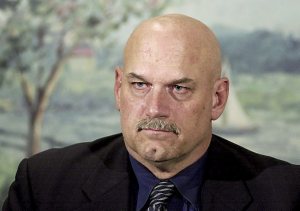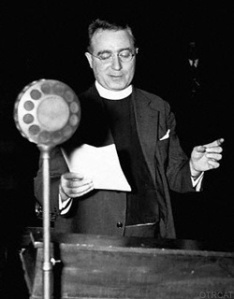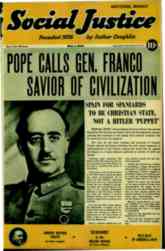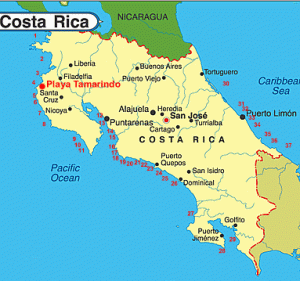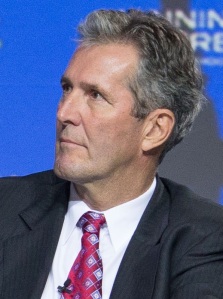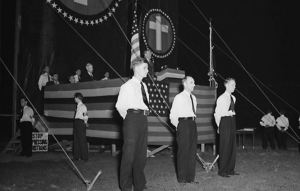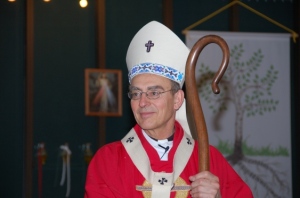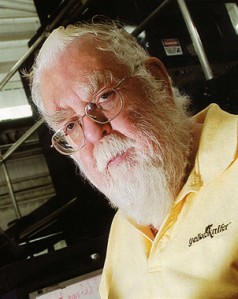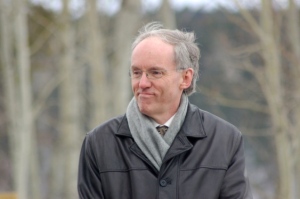
Steve Ashton, minister of infrastructure and transportation, and Thompson’s NDP MLA since 1981, making him the marathon man of Manitoba politics, did what every political analyst and commentator in the province believed was impossible. He lost the supposedly safest NDP seat in Manitoba to Progressive Conservative rookie Kelly Bindle by 210 votes. “Bindle received nearly 45 per cent of the vote compared to a little over 39 per cent for Steve Ashton and 16 per cent for Liberal candidate Inez Vystrcil-Spence,” wrote Thompson Citizen editor Ian Graham in his online election night story. “Ashton took 68 per cent of the votes in the 2011 election, more than double the total of the PC candidate Anita Campbell.”
The turnout in Northern Manitoba was the lowest in the province. Here in Thompson, where the weather was sunny and 21.2°C, way above the normal daytime high of 6°C, voter turnout was 38.12 per cent, with only 3,865 of 10,138 eligible voters casting a ballot. Thompson had 21 rejected ballots and 20 voters declined ballots. The turnout here was about 20 per cent less than the provincewide turnout of 58.86 per cent.
There have only been 13 provincial general elections since the Thompson constituency was created in June 1969. Progressive Conservative Labour Minister Ken MacMaster, who won the seat in the Oct. 11, 1977 election, and held it for four years until 1981, was the only Tory to ever hold the seat before Bindle. Before MacMaster, Ken Dillen, who ran against Ashton as a Liberal in the 2011 election, held the seat for the NDP from 1973 to 1977, while Joe Borowski held the seat in 1972-33 as an Independent NDP, and from 1969 to 1972 as an NDP member. Borowski defeated former Thompson mayor Tim Johnston’s father, Dr. Blain Johnston, by seven votes in the Feb. 20, 1969 byelection in the old provincial constituency of Churchill, which included the town of Thompson. He went on four months later to win the newly-created constituency of Thompson in the June 25, 1969 general election.
Ashton had won nine consecutive elections between 1981 and 2011 before going down to defeat in 2016 in his bid for 10 in a row. For that, he can thank mostly Premier Greg Selinger, first for increasing the PST in July 2013 by one per cent from seven per cent to eight per cent without a referendum, less than two years after promising voters in the 2011 election campaign that he wouldn’t raise the tax without a referendum, and secondly for the premier desperately clinging to power as his popularity plummeted, still hanging on futilely after beating former health minister Theresa Oswald by 33 votes on the second ballot of a leadership campaign vote in March 2015. Ashton, who also ran against Selinger for the leadership in 2009, was dropped from the 2015 race after finishing last on the first ballot. While his own party couldn’t quite get rid of Selinger, Manitoba voters as a whole proved themselves as being more than up for the job, dispatching the NDP from power for the first time since the last millennium, although the premier has the consolation – if it is any – of holding onto his own St. Boniface seat.
Long-victorious politicians like Steve Ashton almost always only lose their seats when the tide turns against their party in a huge way, and they’re swept out, along with most of their colleagues. Nothing personal, more or less, although there has been an undercurrent in Thompson since the 2011 election that perhaps now was the time for “Steve to go.” Go in the sense that maybe after more than three decades, it was time for Steve to stand aside. Most Thompsonites would likely have preferred to see Ashton make that call on his own to retire on top, rather than be turfed at the polls, but rare is the politician from any party who knows when it is time to go and exit gracefully.
Brian Pallister’s Progressive Conservatives, which take office May 3, won 40 of the 57 seats in the Manitoba Legislative Assembly in Tuesday’s landslide victory, tying a record for most seats set way back in 1915 when Premier Tobias Crawford Norris’ Liberals also won 40 seats in the Aug. 6 election in a legislature with 47 seats. The Manitoba Legislative Assembly has had 57 seats since 1949. The NDP won 37 of the 57 seats in the 2011 election but only 14 this time.
Ashton was first elected to the Manitoba legislature at the age of 25 in the Nov. 17, 1981 provincial election, defeating MacMaster by 72 votes in a race that has entered the realm of local political folklore, as the April 19, 2016 provincial election no doubt will as well. Ashton garnered 2,890 votes to MacMaster’s 2,818 in the 1981 election. Liberal Cy Hennessey finished dead last with 138 votes. At the time of his first election, Ashton was involved in an Inco strike as a member of Local 6166 of the Steelworkers. Ashton still gets a kick out of pointing out his shift boss voted him for him, saying he would make a better politician than a miner.
Chris Adams, vice-president of Probe Research, and an adjunct professor at the University of Winnipeg in the Department of Political Science, who has served as an election desk analyst for various media outlets in Manitoba, suggested to Winnipeg Free Press multimedia producer Kristin Annable the results of Tuesday’s provincial election in Northern Manitoba, including in the neighbouring Kewatinook constituency, formerly called Rupertsland, where another veteran NDP cabinet minister, Eric Robinson, also went down to defeat, to Liberal challenger Judy Klassen from St. Theresa Point First Nation, show the core of the NDP is more damaged than previously thought. Even in The Pas and Flin Flon constituencies, the NDP barely clung to their seats. Adams, who has written extensively on Manitobans’ voting patterns, said he was surprised at Ashton’s and Robinson’s defeats. The NDP’s core electorate is based in inner-city Winnipeg and Northern Manitoba, he said.
Damaged core for the NDP is right. Think engine room and a warp core breach on the USS Enterprise (NCC-1701), a Federation Constitution-class starship, and you’ve got the provincial NDP picture for Northern Manitoba right now.
My own election prognostication, while accurate for the province as a whole, also missed the shifting ground in Northern Manitoba. Two days before the election, I wrote: “If the pollsters are correct, the provincial NDP, which have won four consecutive majority governments dating back to 1999, are about 48 hours away from being turfed from power, having been at the helm since 1999, with Pallister and his PCs easily forming the next majority government.
“Frankly, that wouldn’t surprise me at all. That’s how democracy works. Every political party and every politician has a best-before date. The NDP may be rapidly approaching shelf life expiry. Certainly, even if they somehow manage to hang onto power Tuesday, it will be as a very marked-down electoral product in most of Manitoba. Not so here in Northern Manitoba methinks. Perhaps it is the cold climate, but I expect the NDP to have an extended shelf life here, illustrating for the first time in this millennium perhaps the political divide that can exist between north and south in Manitoba at times, although the 31 Winnipeg constituencies will likely be the wildcard that decides which party will govern in the 57-seat legislature, not, alas, the four loyal orange Northern Manitoba constituencies of The Pas, Flin Flon, Kewatinook and Thompson.”
Just how thoroughly NDP orange Thompson was surprised me when I first moved here in 2007. Thompson is a place where I discovered not only did many members of the local Thompson Chamber of Commerce support the NDP, some were even on the local NDP provincial constituency executive! Nowhere else had I lived in Canada where the NDP had that kind of support from Chamber of Commerce folks. Past mayor Tim Johnston ran against Ashton as a Liberal in 1995 but was himself a card-carrying NDP member and loyal Ashton supporter by the time I arrived in Thompson nine years ago. That Ashton had a lock on the local political establishment was indisputable. In 2008, Louise Hodder, district supervisor of the Thompson Assessment office for Manitoba’s Department of Intergovernmental Affairs at the time, served as president of the Thompson Chamber of Commerce, while a card-carrying NDP member. Hodder, who is also a certified municipal administrator, was later appointed by an order-in-council of the provincial NDP government as the $88,000 per year resident administrator of the Local Government District (LGD) of Mystery Lake on Jan. 28, 2013. Margaret Allan, a former CBC Radio producer and manager of the Thompson Chamber of Commerce back in 2008, was also an ardent NDP supporter. The Thompson Chamber of Commerce NDP membership affiliations – even a single one – would be considered remarkable in much of the country. Here, it was just considered good business. Thompson really was a different world.
Mind you, Kelly Bindle, who was recruited by Pallister’s Tories to run surprisingly successfully against Ashton in what turned out to be a classic David-and-Goliath contest, is far from an unknown in Thompson, albeit he is a political novice. Bindle is a popular small businessman, who after the 2011 provincial election wound up taking over Carroll Meats, which had been closed for more than a year, on March 15, 2013, when Dave Carroll retired for health reason, renaming his business Ripple Rock Meat Shop. “Before I started I didn’t know anything about butchery,” Bindle told the Thompson Citizen in 2013. “Part of the deal in buying the place was getting trained by Dave [Carroll]. I purchased all the assets and part of the deal was he would train us and help set it up.” Bindle, who is also a civil engineer and in 2006 opened his engineering consulting firm Bindle Engineering Limited, which he still works at, spent more than three years before that working for INCO in Indonesia before returning to Thompson, after growing tired of the isolation of sitting in an office behind a computer all day. Bindle’s late father, Otto, first came to Thompson as one of the pioneers here in 1959 to run the Thompson Inn, or TI, as locals usually call it, as well as the Burntwood Hotel, across the street almost, and later owned Thompson Bargain Furniture. His mother, Grace, a retired teacher, is a well-known member of St. James the Apostle Anglican Church in Thompson, and a former Thompson Volunteer of the Year, an award established by the City of Thompson, as well as a Thompson YWCA Women of Distinction recipient.
Ashton, a native of Surrey in England, came to Canada at the age of 11 with his family. His dad was unemployed, he noted in April 2008, when they arrived in Toronto in 1967, and they moved the same year to Thompson. A graduate of R.D. Parker Collegiate in Thompson and the University of Manitoba in Winnipeg, he received his master’s degree in economics from Lakehead University in Thunder Bay and is an economist. He was president of the University of Manitoba Students Union in 1978-79 and lectured in economics for the former Inter Universities North in Thompson and Cross Lake. Ashton’s wife, Hari Dimitrakopoulou-Ashton, has taught mathematics in the business administration program in the Roblin Centre at Red River College in Winnipeg, and is from Alexandroupoli in northeastern Greece originally. She moved to Thompson with him in December 1979. Also an economist, Dimitrakopoulou-Ashton has lectured at the post-secondary level in economics, management and women’s studies. She authored Women Entrepreneurs in the North, and as well is a former trustee with the School District of Mystery Lake (SDML), as his son, Alexander, who chaired the SDML for two years during a turbulent period several years ago. He did not seek re-election when his four-year term expired in October 2014. From 2009 to 2014, he was employed at University College of the North (UCN) in Thompson as a civil technology instructor. He spent last year in Denmark working on a master’s degree in urban planning and management at Aalborg University. Steve Ashton’s daughter, Niki, is serving her third term in the House of Commons as NDP MP for the federal riding of Churchill–Keewatinook Aski after besting Liberal challenger Rebecca Chartrand by 912 votes in last October’s federal election. She was first elected to Parliament in October 2008 and re-elected in the May 2011 election. A former instructor at University College of the North (UCN), she is married to Ryan Barker, who moved here with her, and is now a local school teacher and Juniper Elementary School-R.D. Parker Collegiate school connector from Mayerthorpe, Alberta.
Ashton also has two family members who are doctors in Northern Manitoba. His brother, Dr. Martin Ashton, is based in South Indian Lake, and his cousin, Dr. Sarah Ashton, is stationed in Oxford House.
While Steve Ashton has lived and breathed Manitoba politics for seemingly his entire adult life, he also some other interests that while still political, are not Manitoba specific. He is the chair of the Canadian Committee for the Restitution of the Parthenon Marbles, seeking the return of the sculptures from Britain to Greece. He’s a delegate to the International Association for the Reunification of the Parthenon Sculptures, speaks Greek and has written on the political culture of Greece.
The Temple of Athena Parthenos on the Acropolis of Athens is the symbol of the Golden Age of Greece and of the ideal of democracy. It is considered an integral part of the identity of the modern Greek nation and a monument of worldwide significance. Lord Elgin in 1801 removed several of its sculptures, which are housed in the British Museum in London. In 1982, Greece petitioned the British government for the return of these sculptures. The Canadian committee was formed in 2000.
The Tiger Dam controversy “that has dogged Ashton was also a likely factor in his loss,” Adams told Kristin Annable April 19.
“Ashton has faced months of allegations surrounding his attempt to secure a $5-million, sole-source contract for Tiger Dam flood-mitigation equipment.” Annable wrote. The company involved was represented in Manitoba by Winnipeg restaurateur Peter Ginakes with whom Ashton “had a strong personal and professional relationship,” she said. Ginakes owns the Pony Corral Restaurant & Bar on St. Mary Avenue in downtown Winnipeg. He and his family have been in the restaurant business in Winnipeg since the 1950s, owning popular eateries such as the Thunderbird Restaurant, Rib Shack Restaurant and Lounge and the Town & Country. Ginakes had donated two years before the 2011 floods to Ashton’s unsuccessful leadership campaign in September and October 2009 to become Manitoba NDP party leader and premier, after Gary Doer stepped down to become Canada’s ambassador to the United States in Washington. Outgoing Premier Greg Selinger took almost two-thirds of the ballots cast and sailed to victory in the two-way race with 1,317 votes to Ashton’s 685. None of Ashton’s cabinet colleagues – some who had sat around the cabinet table with him for a decade – supported his bid to become premier in 2009.
Ashton did not serve in the cabinet of Howard Pawley for the seven years he led the NDP in Manitoba as premier from 1981 to 1988, but Ashton easily won re-election in Thompson as an MLA 1986, 1990, 1995, 1999, 2003 and 2007. The NDP were defeated in the provincial election of 1988 and Ashton served for a time as house leader for the NDP in opposition. He also served at various times as the NDP’s labour critic, health critic, and led the unsuccessful fight against the PC’s privatization of MTS in 1997. He finally made it into cabinet in October 1999 when Doer appointed him as minister of highways and government services. Following a cabinet shuffle in September 2002, Ashton became minister of conservation. In June 2003, he was also made minister of labour and immigration with responsibility for multiculturalism and administration of the Workers Compensation Act. In November 2003, he was named as the province’s first minister of water stewardship and in 2007 was shuffled to the post of minister of intergovernmental affairs and minister responsible for emergency measures.
Ashton asked Ron Perozzo, recently retired Manitoba conflict-of-interest commissioner, for a formal opinion on Ginakes’ contribution to his 2009 leadership campaign in June 2015, as the Tiger Dam controversy continued to swirl. Ashton asked Perozzo for an opinion on whether the restaurateur’s contribution to his 2009 leadership campaign created a conflict of interest.
Perozzo said it had not.
“In my opinion, a contribution to a leadership contestant made in accordance with the terms of the Election Financing Act would not be a fee or commission paid to a person for representing the interests of another person,” Perozzo said in his report last July 15.
Carson City, Nevada-based US Flood Control Corporation markets the Tiger Dam system, which bills itself as an alternative to sandbagging prior to a flood, and consists of elongated flexible tubes which maybe quickly stacked, joined end to end and filled with water. International Flood Control Corporation of Calgary is the Canadian subsidiary, which Ginakes acted as Manitoba Tiger Dam distributor for. Tiger Dam’s pyramid-shaped structure forms a barrier to protect buildings, resort properties and any other structures prior. The tubes can be filled with a two-inch pump, a fire hydrant or even a garden hose. The tubes are capable of being stacked up to a maximum of 32 feet high and linked together seamlessly for miles. They can be virtually any length and take any shape. Each tube weighs 65 pounds dry and 6,300 pounds when filled with water.
These temporary engineered, interlocking, flexible tubes are then drained of water which flows back into the river when the flooding subsides. The result is a reusable system that protects property without the need of sandbags. When the floodwaters recede, the tubes can be drained within minutes, rolled up and reused again and again.
Manitoba Ombudsman Charlene Paquin said in a Jan. 7 report Manitoba Infrastructure and Transportation (MIT) did not have sufficient reason to try to purchase the Tiger Dam flood-fighting equipment in 2014 without going to tender. Her report into the attempted purchase – which didn’t go through and was then sent to tender in December 2014 in the form of a Request for Proposal (RFP), which was subsequently not awarded – also found that Manitoba Infrastructure and Transportation did not do enough research and analysis into whether the particular type of flood-fighting equipment that the Interlake Reserves Tribal Council (IRTC) wanted for the Interlake Emergency Operations Centre was the best way to fight flooding.
“No MIT staff we interviewed knew of research the department had conducted or considered regarding the flood protection needs for First Nation communities in the Interlake region of the province or for the purchase of $5 million of Tiger Dams, despite the guidance in the PAM [Procurement Administration Manual] to do ‘research and analysis’ in the first stage of the procurement cycle,” Paquin said in her report.
“Our understanding is that the department did not conduct this research and analysis because IRTC had already stated to the department that it wanted a specific brand of water-filled barriers and because it was directed to prepare a submission accordingly. We are not satisfied that IRTC requesting specific equipment is sufficient justification for the department not to follow the guidance in the PAM that encourages departments to provide research and analysis regarding what goods or services should be purchased.”
Manitoba Infrastructure and Transportation submission to the Treasury Board Secretariat in Manitoba Finance proposed waiving a competitive bidding process because it felt the sole source exception – one of four acceptable circumstances under which untendered purchases for more than $50,000 can be made – applied. “Individuals we spoke with at MIT indicated that departmental staff did not agree with waiving a competitive procurement process,” wrote Paquin. “However, as noted previously, the department was directed by the minister of MIT [Steve Ashton] to draft a submission that proposed an untendered contract for Tiger Dams. The department indicates that the direction supported IRTC’s request for this equipment because IRTC had this equipment in its inventory and had experience using it.”
While Paquin determined that Manitoba Infrastructure and Transportation did not conduct sufficient research and analysis to support the type of flood-fighting equipment to be purchased, she also said “overall the investigation found that legislation and policy related to tendering were followed.” You can read the 35-page Report on Flood-Fighting Equipment for the Interlake Emergency Operations Centre: The Tiger Dams Proposal is on the ombudsman’s website at: https://www.ombudsman.mb.ca/uploads/document/files/ombudsman-report-on-flood-fighting-equipment-en.pdf
The Interlake Reserves Tribal Council (IRTC), which currently is comprised of the Dauphing River First Nation; Kinonjeoshtegon First Nation; Lake Manitoba First Nation; Little Saskatchewan First Nation; Peguis First Nation; and Pinaymootang First Nation wound up purchasing the Tiger Dam equipment using federal funding instead.
Just four days before the provincial election, OmniTRAX Canada filed a lawsuit April 15 against the province, along with Selinger and Ashton, named as individual defendants, alleging they interfered last December in the sale of Hudson Bay Railway to a consortium of 10 Northern Manitoba First Nations, led by Mathias Colomb Cree Nation, by disclosing confidential financial information about OmniTRAX Canada to consulting firm MNP LLP and Opaskwayak Cree Nation (OCN) at The Pas.
The claim states at the time OmniTRAX Canada was exclusively negotiating the sale with a consortium of 10 northern Manitoba First Nations led by Mathias Colomb Cree Nation. “The unlawful and wrongful conduct of the defendants as aforesaid amounts to a deliberate, high-handed, wanton and outrageous interference with the plaintiffs’ rights,” OmniTRAX Canada claims in their court filing in the Manitoba Court of Queen’s Bench. The alleged breach of the March 2015 non-disclosure agreement “compromised and threatened the plaintiffs’ negotiations for the sale of the plaintiff’s business and assets thereby interfering with the plaintiffs’ economic relations and causing the plaintiffs to suffer loss and damage,” OmniTRAX Canada claims in the court filing.
OmniTRAX Canada entered into a deal last December to sell the Port of Churchill and Hudson Bay rail line to a group of First Nations led by Mathias Colomb Cree Nation.
OmniTRAX Canada has not said how the alleged disclosure of the financial information to Opaskwayak Cree Nation affected the deal.
“Based on internal reviews already undertaken, the government intends to deny the allegations,” Shane Gibson, a government spokesman, said in a statement.
The allegations by OmniTRAX Canada have yet to be tested in court before a trier of fact.
OmniTRAX Canada is a wholly-owned subsidiary of the Denver-based short line railroad, which owns Hudson Bay Railway. OmniTRAX in turn is an affiliate of The Broe Group, owned by Pat Broe, who founded the company in Denver in 1972 as a real estate asset management firm.
OmniTRAX created Hudson Bay Railway in 1997, the same year it took over operation of the Port of Churchill. It operates more than 1,000 kilometres of track for freight service in Manitoba between The Pas and Churchill. OmniTRAX Canada, Inc. bought the Northern Manitoba track from CN in 1997 for $11 million. It took over the related Port of Churchill, which opened in 1929, when it acquired it from Canada Ports Corporation, for a token $10 soon after buying the rail line.
Via Rail Canada also rents the use of the track for passenger service along the Bayline to Churchill from OmniTRAX Canada. Along the Hudson Bay Railway Bayline between Gillam and Churchill is Bird, Sundance Amery, Charlebois, Weir River, Lawledge, Thibaudeau, Silcox, Herchmer, Kellett, O’Day, Back, McClintock, Cromarty, Belcher, Chesnaye, Lamprey, Bylot, Digges, Tidal and Fort Churchill.
The Bayline reached Churchill on March 29, 1929.
You can also follow me on Twitter at: https://twitter.com/jwbarker22

 The brothers aren’t getting any younger. Pete Zaworonok is 77. His younger brother, Raymond is 72. Neither are in the best of health these days. So retirement looms, with Pete planning to relocate permanently back to his longtime home near Nelson, British Columbia, while Raymond’s home is in Calgary. Until recently, the brothers would often takes turns commuting back to their Alberta and British Columbia homes for months at a time, while the other brother remained in Thompson minding the store, Crazy Petes, their legendary eclectic small-town hardware-like store, at the corner of Hayes Road and Seal Road, with one of this, and two of that. On rare occasions, I’d come into the store while the brothers were together during a brief overlap.
The brothers aren’t getting any younger. Pete Zaworonok is 77. His younger brother, Raymond is 72. Neither are in the best of health these days. So retirement looms, with Pete planning to relocate permanently back to his longtime home near Nelson, British Columbia, while Raymond’s home is in Calgary. Until recently, the brothers would often takes turns commuting back to their Alberta and British Columbia homes for months at a time, while the other brother remained in Thompson minding the store, Crazy Petes, their legendary eclectic small-town hardware-like store, at the corner of Hayes Road and Seal Road, with one of this, and two of that. On rare occasions, I’d come into the store while the brothers were together during a brief overlap.


